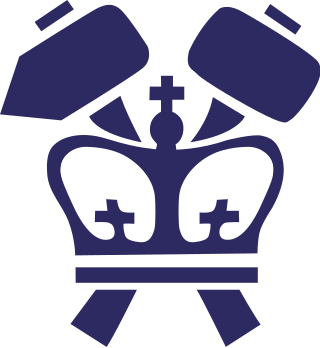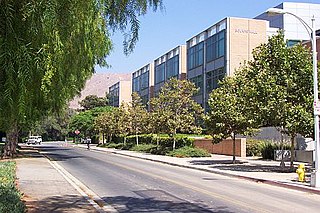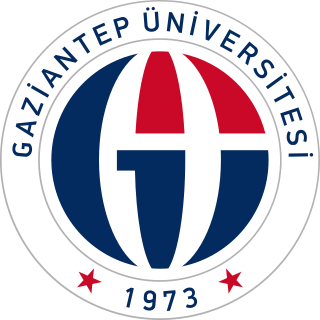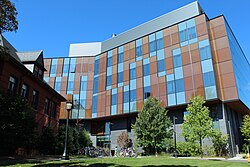
Middle East Technical University is a public technical university located in Ankara, Turkey. The university emphasizes research and education in engineering and natural sciences, offering about 41 undergraduate programs within 5 faculties, 105 masters and 70 doctorate programs within 5 graduate schools. The main campus of METU spans an area of 11,100 acres (4,500 ha), comprising, in addition to academic and auxiliary facilities, a forest area of 7,500 acres (3,000 ha), and the natural Lake Eymir. METU has more than 120,000 alumni worldwide. The official language of instruction at METU is English.

The Fu Foundation School of Engineering and Applied Science is the engineering and applied science school of Columbia University. It was founded as the School of Mines in 1863 and then the School of Mines, Engineering and Chemistry before becoming the School of Engineering and Applied Science. On October 1, 1997, the school was renamed in honor of Chinese businessman Z.Y. Fu, who had donated $26 million to the school.

The Marlan and Rosemary Bourns College of Engineering, or commonly known as Bourns Engineering or BCOE, is an Accreditation Board for Engineering and Technology-accredited College of Engineering located in Riverside, California on the campus of the University of California, Riverside. The Marlan and Rosemary Bourns College of Engineering was established in 1989, and named in honor of Marlan Bourns, a B.S. physics graduate of the University of Michigan and Rosemary Bourns, founders of Bourns, Inc.
The College of Engineering, formerly the Dwight Look College of Engineering, is the engineering school of Texas A&M University in College Station and is home to over 22,000 students in 15 departments.

Iran University of Science and Technology (IUST) (Persian: دانشگاه علم و صنعت ایران, Daneshgah-e 'elm vâ Sân'at-e Iran) is a research institution and university of engineering and science in Iran. The university is home to 15 faculties offering undergraduate and postgraduate degrees in a wide range of engineering-based subjects as well as maths, physics, and department of foreign languages. In 1995 IUST awarded Iran’s first PhDs in materials, metallurgical and traffic engineering. IUST is the only university in the Middle East which has a school of railway engineering and a school of progress engineering. It is also the only university in Iran which has a school of automotive engineering. There are also 12 research centres, nine centres of excellence and 19 specialised libraries as well as four satellite campuses in other parts of the country. IUST is located on Hengam Street in the Narmak neighborhood in northeast Tehran. IUST and its surrounding communities provide a cultural and recreational environment suited to the work of a major research institution.
Santa Clara University School of Engineering was founded and began offering bachelor's degrees in 1912. Over the next century, as the Santa Clara Valley transformed from a largely agricultural area to an industrial center, the school added master and doctoral programs designed to meet the area's growing need for expert engineers. Today, the Silicon Valley provides a setting for the school's programs offered through a broad range of departments.

The Pakistan Navy Engineering College (PNEC), (Urdu: دانشکدہ بحریہ برائے علومِ مہندسی ، پاکستان) also called PNS Jauhar, is a military college operated by the Pakistan Navy. Located in Karachi, Sindh, Pakistan, it is also a constituent college of the National University of Sciences and Technology, Pakistan. It grants bachelor's, master's and doctoral degrees in the science and engineering disciplines.
The School of Engineering and Applied Science (SEAS) at the George Washington University in Washington, D.C. is a technical school which specializes in engineering, technology, communications, and transportation. The school is located on the main campus of the George Washington University and offers both undergraduate and graduate programs.

Gaziantep University is a public university in Gaziantep, Turkey. Gaziantep University has 10 faculties, containing a total of 22 academic departments, with a strong emphasis on scientific and technological research.
The Ira A. Fulton College of Engineering represents Brigham Young University's (BYU) engineering discipline and includes departments of chemical, civil, electrical and computer, and mechanical engineering and the school of technology. The college awards about 700 degrees every year and has almost 3,600 students.
The University of Santo Tomas Faculty of Engineering, or UST-Eng, is the engineering school of the University of Santo Tomas, the oldest and the largest Catholic university in Manila, Philippines.

The College of Engineering of the University of the Philippines Diliman is the largest degree-granting unit in the U.P. System in terms of student population. The college is also known formally as UP COE, COE, and informally as Eng'g.

The College of Engineering (CoE) is one of the three undergraduate colleges at the University of California, Santa Barbara.
The College of Engineering at Michigan State University (MSU) is made up of 9 departments with 168 faculty members, over 6,000 undergraduate students, 10 undergraduate B.S. degree programs and a wide spectrum of graduate programs in both M.S. and Ph.D. levels. Each department offers at least one degree program, however many include more than one degree, multi-disciplinary programs, certifications and specialties as well as other degree programs affiliated with other colleges at Michigan State University.

The Henry Samueli School of Engineering (HSSoE) is the academic unit of the University of California, Irvine that oversees academic research and teaching in disciplines of the field of engineering. Established when the campus opened in 1965, the school consists of five departments, each of which is involved in academic research in its specific field, as well as several interdisciplinary fields. The school confers Bachelor of Science, Master of Science, and Doctor of Philosophy degrees.
The Irwin and Joan Jacobs School of Engineering is an undergraduate and graduate-level engineering school offering BS, BA, MEng, MS, MAS and PhD degrees at the University of California, San Diego in San Diego, California. The Jacobs School of Engineering is the youngest engineering school of the nation's top ten, the largest by enrollment in the University of California system, as well as the largest engineering school on the West Coast and the ninth-largest in the country. More than thirty faculty have been named members of the National Academies. The current dean of the Jacobs School of Engineering is Albert P. Pisano. The Jacobs School of Engineering sends a monthly news email which anyone can subscribe to.

The John and Marcia Price College of Engineering at the University of Utah is an academic college of the University of Utah in Salt Lake City, Utah. The college offers undergraduate and graduate degrees in engineering and computer science.
The Northeastern University College of Engineering(COE) is the engineering school of Northeastern University in Boston, Massachusetts. It offers Bachelor of Science (BS), Master of Science (MS) and doctoral degrees, as well as graduate certificates, in a variety of engineering fields, as well as undergraduate and graduate degrees in interdisciplinary and engineering fields. It is by the accredited by the Engineering Accreditation Commission of ABET

The Fred DeMatteis School of Engineering and Applied Science (SEAS) is the engineering school of Hofstra University, a private university in Hempstead, New York. It was created in 2012 out of the previously existing Departments of Engineering and Computer Science. It is accredited by ABET.
















